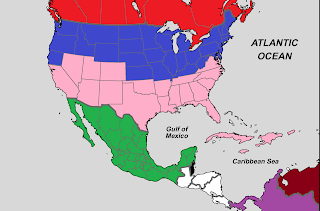1. General John Bell Hood, 3rd Commandant of the CS Marine Corps
Following the invasions of Haiti and Jamaica in the early 1870s, General Hood's autobiography, one of the first by a Confederate General hit the shelves. Known as The Sun Never Sets On the Confederacy, it chronicled the life of the aging General Hood. An affair with his biographer, Mary Lynch, however, removed him from public office in 1874. This resulted in a prestige hit to the Pemberton administration in it's final year.
2. Savannah, circa 1877
By 1875, James Longstreet's Abolitionist movement gained enough sheer support to vault him into public office. His position allowed space to finish the previous three President's abolitionist work. The industrialization allowed Longstreet to technically eradicate slavery - although African Confederates had a much lower minimum wage than the average Confederate - while this gained Longstreet much prestige outside of the New World, it was considered a cowardly move by the United States and Mexico.
3. Two African Confederate Families in Alabama, circa 1881
In 1877, due to the increasing grasp of a Spanish Dictatorship in Cuba and Puerto Rico, the United States and the Confederate States cooperated for the first time since 1865 in London. The US sent Marines and landed in the Philippines on June 6, 1877. 2,000 CSMC Men landed on Puerto Rico and 9,000 in Cuba ten days later. By 1878, the Spanish considered their position so precarious in the war that they extended their hand to the French and their puppet in Mexico. British intelligence gathering operations slammed said negotiations into the ground, and sent the information to the Americas.
The resulting spearhead into Mexico in 1878 was so deadly for Mexican forces they surrendered Baja California to the Confederates in just six months. Hawaii soon followed. By 1880, William Tecumseh Sherman's Confederate Marines were considered war heroes, which assisted Sherman's rise to the presidency in the same year.
4. President-Elect William T. Sherman, 1880
Sherman's presidency proved to be a hard one. With the integration of Cuba, Puerto Rico, and Baja California, Sherman also had to cater for the ever growing monopolies which increasingly began to control government. In 1882, Sherman was said to have slammed his fist on the table and said, "The damn monoplies. They must be dealt with," and so he did. On June 21, 1882, Sherman issued the Anti-Trust Act, destroying seven trusts across the Confederacy, with three more falling before 1885. In 1884, Congress passed the Second Amendment, allowing Sherman another, shorter, four year term. He was reelected in 1885. During this time, he expanded relations with the European powers, namely France and the United Kingdom, as the US established alliances with Japan, China and Russia, the three eastern superpowers.







